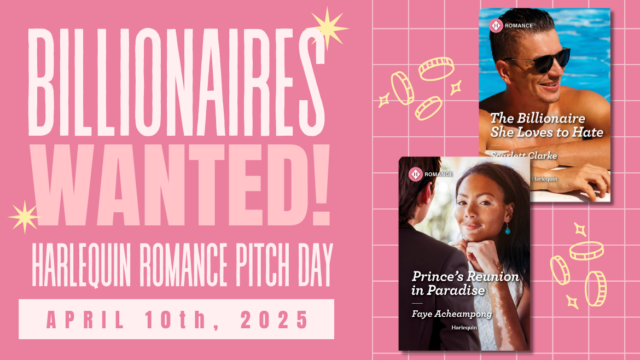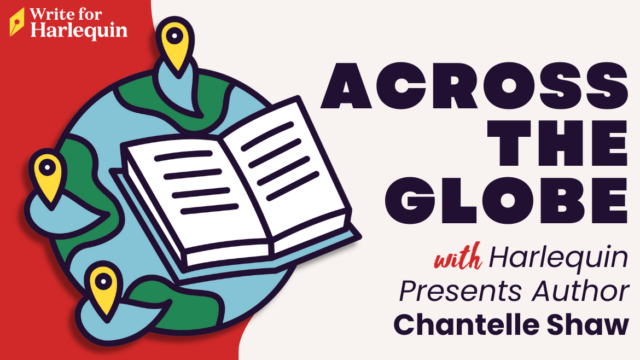
If you’re thinking about submitting a story to Harlequin editors, you may be brushing up on how to successfully pitch your romance novel. Whether you’re answering a submission call or pitching to an editor at a writer’s conference, chances are you’re putting a lot of pressure on yourself to craft the perfect pitch.
First of all, relax! Pitches don’t have to be perfect but there are things we’d like to know about your story. Here are some tips to help you put your best foot forward when seeking publication.
What is a Pitch?
The goal of a pitch is to highlight all those fantastic selling points of your story and share them with an editor and/or agent, who will hopefully then take on your project! To do that, it’s important to capture our attention with a few key things…
Elements of a Pitch:
The Hooks and Tropes:
We want to know about all those well-loved elements of setting, characters and plot—including the tried-and-true themes and storylines romance readers love. Your hooks and tropes should be well-defined when pitching. If you’ve got cowboys, billionaires, unexpected pregnancy, holidays, royalty, a forced proximity reunion romance, lay it all on us and don’t hold back!
The Lead Characters:
Tell us who your protagonists are. They’re the ones we’ll be spending time with in reading your story, so we want to get a sense of the leading couple. That said—keep it to the basic details needed to outline the plot and conflict. Goals and motivations are important but try not to lose us with too much unnecessary backstory.
The Defined Plot:
Again, give us the basic arc of your plot—two ex-best friends must plan their high school reunion together, and in unraveling the past they find a future. A lawman must protect a witness on the run, and a steamy night together leads to an unexpected pregnancy. We want to get a sense, of course, of how your story builds to a climax, but we don’t need a lengthy breakdown of the story scene-by-scene. Save that for the synopsis!
The Romantic Conflict:
The best part (in my opinion)! Every romance has one—give us the details of those obstacles keeping the couple apart (both internal and external) and how this creates juicy tension and high stakes in your story.
Overall…
Not so bad, right? Again, these elements should be well-defined in any romance story, so pulling them out into a pitch of a couple hundred words, a couple minutes—or 118 seconds, as the standard elevator pitch goes!—is a great way of taking a snapshot of your novel. If one of these elements can’t be condensed to the basics, it’s perhaps a sign that you might wish to review your story first, to see if it needs more focus.
Remember that when in doubt, if you’re pitching to an editor, stay calm, be yourself, and tell us what you love about your story. Hearing you highlight your favorite aspects of your novel helps us fall in love with it too!
Top Tips for Virtual Pitching

Keep it Simple:
If you’re pitching your work via social media at an online event, you’re likely to have a smaller amount of space or time to get your idea out. The pitch you write will be your first introduction to a potential editor. So, it’s important to be clear and concise.
Use Comparison Titles:
Using comparison titles is a great way, in a smaller number of characters, to give an editor an instant flavor of what your story will be like: e.g. The Proposal x Grey’s Anatomy.
Add a Descriptive Hashtag:
Finally, the best piece of advice we can give you is this: get familiar with hashtags! It’s how an editor, on the day, will narrow their search. It’s important to remember, however, that not every hashtag will work for your story. Pick the hashtags that best reflect your story and remember there are more out there! Do your research and use any hashtags that fit your pitch best. Here are some common ones to help tell an editor about your story:
Tell us about the genre and/or subgenre…
- #R (romance)
- #A (adult)
- #CR (contemporary romance)
- #RS (romantic suspense)
- #Insp (inspirational romance)
- #HR (historical romance)
- #SR (sweet romance)
And why not add the heat level, too…
- #mild (no contact to kissing)
- #med (kissing to intimate contact, but fade to black [FTB] love scenes)
- #hot (action-packed love scenes where the reader goes along for the ride)




